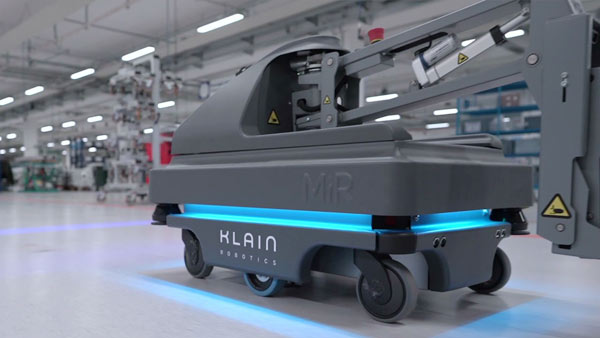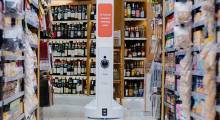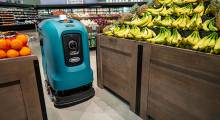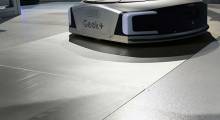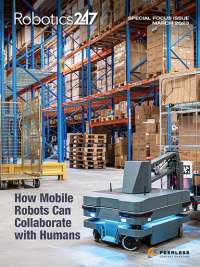Inpeco SA provides automation for clinical laboratories. The Novazzano, Switzerland-based company's plant in Val della Torre, Italy, has more than 27,000 square meters (88,500 sq. ft.) of space, with 12,000 sq. m (39,300 sq. ft.) dedicated to production. Inpeco needed to optimize its processes and ultimately found a towing robot from Mobile Industrial Robots ApS.
“As a manufacturer of automation solutions, the implementation of advanced technologies and the digitization of processes in our plant is a particularly relevant factor,” said Stefano Tolomeo, head of production at Inpeco. “That’s especially true from an Industry 4.0 perspective, which aims at continuous improvement of the quality and reliability of our solutions, as well as the efficiency of our internal processes.”
Inpeco reviews its layout from lean perspective
About three years ago, Inpeco decided to review the processes and layout for its entire production flow from a lean manufacturing perspective. This upgrade required efficient logistics and timely supply of the production lines, based on a call-up system for line operators.
Once workers emptied materials for assembly from a trolley, they needed to call up another for more materials and remove the empty one. Such movement would require a full-time commitment, but staffers needed to be relieved of transport-only tasks, which were repetitive, time-consuming, and demotivating.
Inpeco wanted operators to be able to call up robots to deliver materials to their stations and then tow away empty trolleys or finished products once testing has been completed.
AMRs offer to relieve worker burden
After examining various options to automate internal transport in its factory, Inpeco (with support from distributor Klain Robotics) decided to deploy an autonomous mobile robot (AMR) with a hook capable of pulling materials. The dimensions and load capacity of the MiR200 Hook from Odense, Denmark-based Mobile Industrial Robots (MiR) enabled Inpeco to meet its transport needs and allowed workers to engage in more meaningful work.
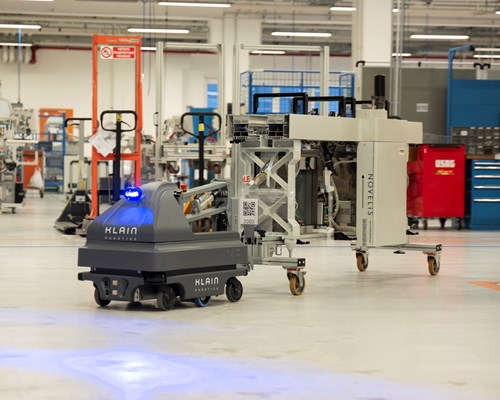
“We were looking to automate some processes with low added value to be able to redirect resources to operations that are more important and indispensable for the company,” said Roberto Ferraro, product manager at Inpeco. “We decided the first application should be the transport of raw materials from the warehouse to the production line and finished products from production to the packaging department.”
“Thanks to the MiR robot, we were able to concentrate on the most productive activities for us, always focusing on the safety of workers, the delicateness of the product, and the dynamic production environment in which Inpeco is used to operating,” he said.
Ease of use was also a determining factor. With an intuitive user interface, even less experienced operators can use the robot, always having the opportunity to monitor and manage missions, said MiR.
With the AMR, warehouse operators could devote more time to activities such as picking and loading materials in automated storage areas.
According to Tolomeo, another reason for choosing MiR's mobile robot is its ability to safely move along corridors where it shares space with factory personnel or other means of goods handling.
“The robot is able to detect obstacles, even when they are in motion, and adjust its path accordingly so as to achieve the goal of its mission,” he said. “The MiR robot saved us the space that a traditional solution would require, given that such a solution doesn’t allow for the space to be used for other purposes.”
Rapid implementation and operational efficiency
Production orders are prepared from stock by picking up the material and loading up trolleys weighing up to 500 kg (1,102 lb.). Once the job is completed, the trolley is made available for transport by the MiR200 Hook.
When a production job is finished, the operator activates the call-up software by scanning a QRCode assigned to the work area to request the delivery of a trolley with materials for the next job and the collection of the empty trolley currently at the station. This way, the destination of the robot's mission is registered as the location of the operator who made the call.
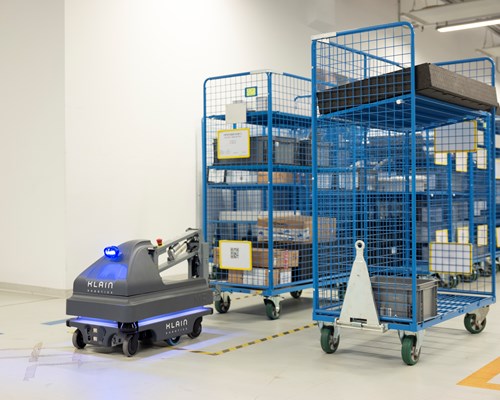
The software also automatically retrieves the correct production order from the management system, making this information available onscreen and allowing the warehouse managers to know which trolleys the robots are collecting.
Once all the assembly phases of the product have been completed, the finished article must be transported to the packaging department. The operator then registers on the management system the end of the process, and packets of information are automatically sent to the robot software, including the size of the article to be moved and its initial position on the map.
MiR's AMR currently moves 16 different objects that vary in length from 1 to 2.5m (3.2 to 8.2 ft.) in Inpeco's production area.
The robot, nicknamed “Robin,” has contributed not only to the optimization of Inpeco's internal logistics, but also to the security of its production area, said the company. During its journey, the AMR makes several detours, travelling along the corridors that delimit the production operator stations.
Each time it enters the corridors, as well as turning and automatically hooking up a trolley, the robot communicates via flashing lights and sounds that alert operators to its arrival.
In addition, thanks to 3D cameras and precision sensors, the robot always places the trolley it is towing in the center. When it encounters an obstacle, such as a person or a forklift truck, the AMR stops and assesses whether an alternative route is available, always in consideration of the trolley. This ensures maximum safety along the way, eliminating the risk of accidents, said MiR.
Inpeco plans for more logistics automation
“To date, our MiR200 Hook robot is used in a specific area of our production departments but we were able to immediately appreciate the benefits of mobile robotics,” Tolomeo said. “However, we must consider that we are in Phase 1 of our project that provides for the use in 2021 of the MiR200 to also supply another production area with the same logic and with the same benefits.”

Inpeco's staff predicted that the implementation will be easy and quick because it will only have to identify the areas on the factory map where the robot will have to deliver the raw materials and withdraw the finished products. The next system will inherit all the configuration logics already implemented.
“At the initial stage of the project, we had estimated that we would get a return on the initial investment in a maximum of two years, and to date, we can say that this will be achieved even a few months earlier,” said Tolomeo.
In addition, Inpeco plans to integrate a new robot with another type of interface that allows, in addition to towing materials, the handling of individual boxes—600X400mm (23.6 by 15.7 in.) or 400x300mm (15.7 by 11.8 in.) from the warehouse to the bench operator and vice versa.
Article topics
Email Sign Up

